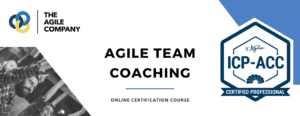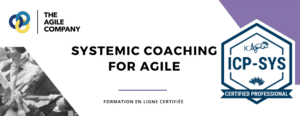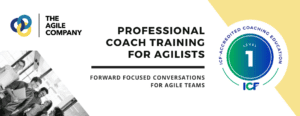What is a Coaching Culture and how can it help drive Agile transformations?
Initially used as a development tool for senior executives, access to coaching has gradually expanded to individuals of all ages, at all stages of their career. Applied to the entire organization, coaching allows for the infusion of behaviors at all levels that will enable the organization to reinvent itself. More and more companies are recognizing the value of a coaching culture that allows employees to develop their skills, knowledge, and ability to act, live and work together for the benefit of sustainable and responsible performance.
What is the link with Agility?
Agile coaching is a support service whose field of expertise is agility, for a determined period of time, of an organization, a team, a person in their journey towards agility for observable results.
At the level of Agility in companies this brings many benefits such as:
-Improved team performance
-Increased employee engagement
-Improved staff collaboration
-Faster leadership development
-Improved creativity and agility
-Improved ability to respond to change
«The work of an agile coach consists of accompanying an organization, a team or an individual in their journey towards or within agility for a determined period of time, with concrete and measurable results. He accompanies the transformation on an organizational and human level.» Jean-Claude Grosjean
What is needed for a coaching culture to start growing?
To develop a coaching culture, leaders need to keep these three essential qualities in mind to create the conditions for new ideas to emerge and for employees to remain trusted and engaged:
Leadership:
What can Agile Coaches do to drive the transformation towards a coaching culture in the organization?
Company transformation is a voluntary choice by strategic management to make the company evolve in accordance with the strategic objectives defined for the future. These change initiatives involve the efforts of everyone, from employees to senior management, to modify, to a greater or lesser extent, the structuring elements of the existing organization. Business transformation allows the company to update its organization and associated knowledge, and to anticipate the needs of its customers and employees. Change management becomes continuous.
The vision, the strategic plan, can be the starting point of a transformation, or an awareness as the dynamic spiral in a visualization of the structuring evolutions of the organization tends to show. When related to a company, major changes show a social fracture between the power and its employees, or between the company and its competitors.
Ultimately, the coaching culture is about taking a different approach to our daily challenges. In other words, when faced with insurmountable challenges, we must quickly turn to new strategies and solutions. A coaching culture is one of the best ways to create the conditions for new ideas to emerge while maintaining employee trust and commitment.
Developing a coaching culture will take a lot of work. It requires investment in training and external coaching. It also requires trust and commitment at the organizational level. The intimate details of coaching conversations must remain confidential.
That said, organizations that choose to invest in a coaching culture will see a very high return: employees will be more engaged, more productive and more innovative.
















































